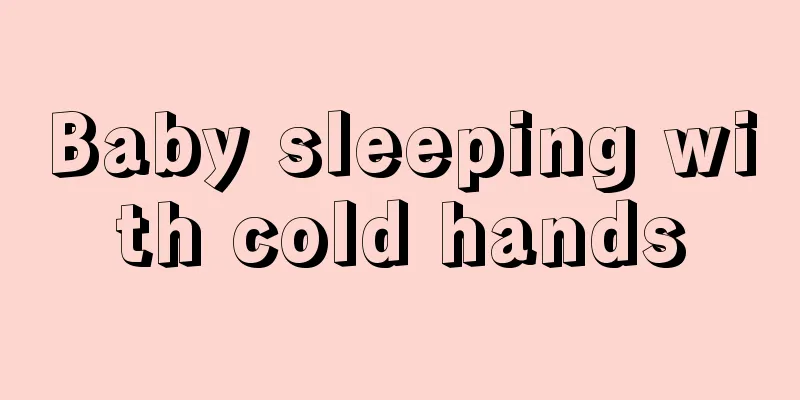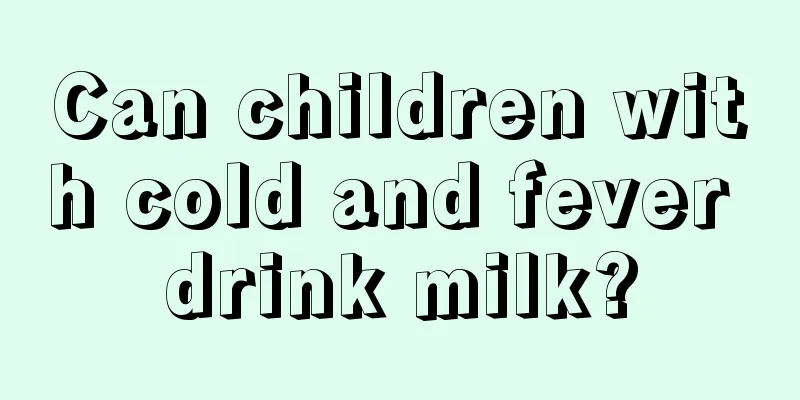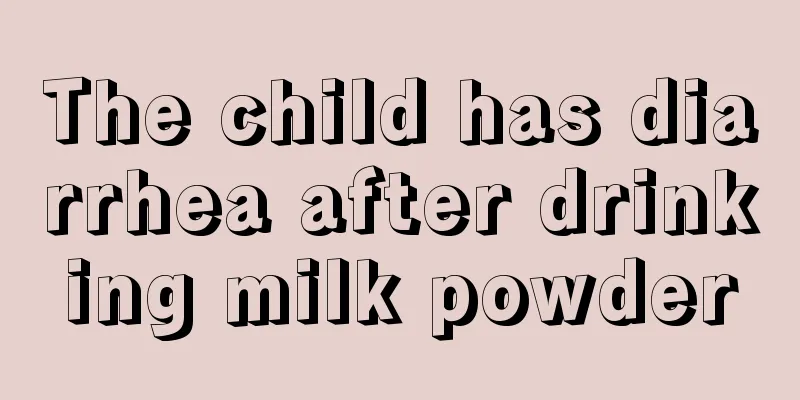What to do if your 1.5-year-old baby has phlegm in his throat

|
If a one and a half year old baby has phlegm in the throat, parents will definitely be very worried. So what should you do if a one and a half year old baby has phlegm in the throat? Next, this article will introduce you to what to do if your one and a half year old baby has phlegm in his throat, for your reference only. Friends who want to know what to do if your one and a half year old baby has phlegm in his throat can continue reading! Please see the detailed introduction below. Common causes of increased sputum include upper respiratory tract infections: such as rhinitis, sinusitis, and pharyngitis; or lower respiratory tract infections: such as bronchiolitis and pneumonia. The main symptoms include breathing noises, difficulty feeding, rapid breathing, large chest rise and fall, and coughing. What should I do if my 1 and a half year old baby has phlegm in his throat? 1. Phlegm-slapping method When the child is coughing, let the child lie on his side or hold him in the position where he lies on his side. The parent slightly bends the five fingers of one hand, makes a fist, and gently pats the child's chest, sides and back. Pat your left side and lie on your left side, alternating between the two sides. The force of the slapping should not be too great, and it should be done from top to bottom and from outside to inside, in sequence. Pat each side for at least 3-5 minutes, 2-3 times a day. The back-patting method can not only loosen the phlegm in the child's lungs and bronchi, drain it into the trachea and discharge it, but also promote blood circulation in the heart and lungs, which is beneficial to the absorption of bronchial inflammation and enables early recovery from the disease. 2. Indoor ventilation To keep the air in the room fresh, open the windows regularly for ventilation. It is best to keep the indoor temperature at 18-22 degrees, but be careful not to let the cold wind blow directly on the children. The relative humidity should be maintained at 60%-65%. You can use a wet cloth to mop the floor to increase the humidity in the room. This is beneficial to keeping the respiratory mucosa moist and the cilia on the mucosal surface moving, which helps with the discharge of sputum. 3. Keep warm Because infants and young children have weaker immunity, they are more likely to catch colds and chills than adults, which can induce respiratory diseases such as tracheitis and bronchitis. Therefore, parents should take good warming measures and not let the baby catch cold. 4. Drinking water method For children who cough, the insensible water loss through the respiratory tract will be very high, and the airway will be relatively dehydrated, which can aggravate respiratory inflammation and the viscosity of secretions, making them difficult to cough out. Let the child drink more water, especially cold boiled water at about 23°C, which has a good moisturizing and physical therapeutic effect on the throat. Drinking more cold boiled water can dilute the viscous secretions, making them easier to cough out, which is beneficial for relieving cough and expectoration, and eliminating local inflammation. At the same time, cold boiled water can improve blood circulation, so that waste or toxins produced by the body's metabolism can be quickly excreted from the urine, thereby reducing its irritation to the respiratory tract. 5. Steam method Pour boiling water into a large pot or teacup, hold the child, and let his mouth and nose face the rising steam and inhale and exhale. This can thin the phlegm and facilitate coughing up, and can also reduce congestion and edema of the trachea and bronchial mucosa and reduce coughing. But be careful to avoid burns and accidents. 6. Drug Law Children should be very cautious when taking medication. They should not take cough suppressants casually to avoid suppressing the cough center and making it difficult to expectorate. Children can take medication under the guidance of a doctor. Parents can also make Sichuan Fritillary Bulbs stewed with pears at home and let their children eat the pears and drink the juice, which is also helpful for reducing phlegm and relieving cough. The above is an introduction on what to do if your one and a half year old baby has phlegm in his throat. I believe that after reading the above introduction, you already know what to do if your one and a half year old baby has phlegm in his throat. From the above introduction, we can see that there are many methods to treat phlegm in the throat of a one and a half year old baby, so parents can try these methods! The treatment effect is still good. |
<<: What to do if your one-year-old baby has a sore throat
>>: What causes acidic stool in babies?
Recommend
Tracheitis in children
Childhood tracheitis means inflammation of the br...
What kind of exercise can help children grow taller?
Height is a representation of everyone's imag...
What should I do if my child snores at night?
In daily life, many people around us snore when t...
What is Auditory Attention Training?
Hearing and attention are very important for chil...
Methods of educating young children
When the baby is young, we should not only pay at...
Causes of blisters on baby's tongue
When a baby has blisters on his tongue, it is mos...
How old is the baby to add complementary food?
Because babies have weak digestive abilities, mot...
What to do if your eight-month-old baby has enteritis and diarrhea
Babies start to eat various complementary foods a...
What to do if your child has a cold and fever repeatedly
Colds and fevers are actually very common disease...
What should I do if my baby burps after eating?
Everyone may have hiccups after eating. This is a...
Symptoms of ADHD in 4-year-olds
Four-year-old children are very likely to suffer ...
What are the benefits of eating grapefruit for children?
We all know that grapefruit is very nutritious, a...
How long does it take to treat neonatal pneumonia?
Some diseases in life are more likely to occur in...
How to judge whether the baby is calcium deficient
Babies have very strong growth potential, but onl...
Why does my baby have a hoarse cough?
For young parents, the baby's weak resistance...









